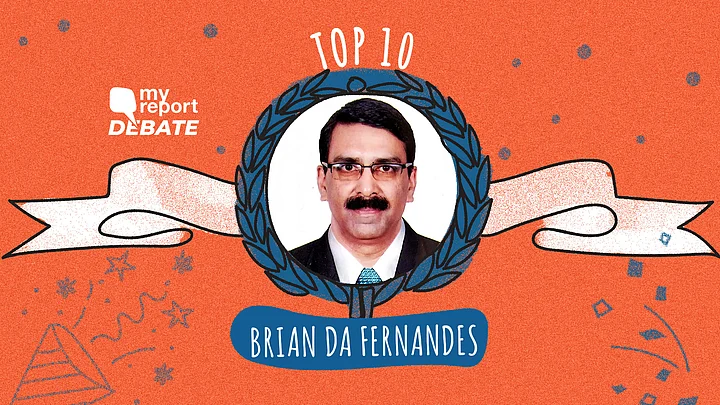(Brian D A Fernandes’s essay is among the Top 10 of the My Report Debate II. Participants were asked the question: How to fix the India-Pakistan relationship – Jaadu ki jhappi or surgical strike?)
When one becomes two, as did India and Pakistan in 1947, the pain is translucent –what goes on beyond the purdah is not blurred by the pain on either side. Human relations do sometimes succumb to this visible distress, but geopolitical relations do not.
They are different.
The factors that govern these relations go beyond the distress of another and common good. These factors, which reside in the minds of the people of the two nations – distinctive religious identity, its leadership, buffeted by domestic expectations’ (which in turn are prepped and propelled by the leadership's own rhetoric), the David vs Goliath preface to an evolving mystery relationship, the eagerness to better and supplant another in the comity of nations rather than to complement and supplement the other, the tyranny of a few over the passivity of the majority – breed negativity, which is difficult, but not impossible to overcome.
This negativity has led to a huge loss of life at the time of partition, in riots, two major wars, one mini-war and several terrorist attacks in both the countries over the last 70-odd years. The reasons attributed to each of these incidents vary based on the country and their lead protagonists.
At the heart of this conflict, ostensibly, is the state of Jammu and Kashmir; in essence, the Kashmir valley. Once upon a time, it identified with India’s majority, before social engineering transformed its identity.
The valley is also strategically located and is sandwiched between two districts that are inclined to align with India. It’s the chutney in a sandwich – it’s what make it tasty and it therefore cannot escape attention!
Given this reality, the best way to handle relations with Pakistan is engagement, not isolation or violence – for one leads to the other and violence begets retaliation.
Engagement today, however, is a no-no as long as neither side is willing to move forward on each other’s pain points which are fixated on the Kashmir valley for a variety of historical and strategic reasons. These include, on the Indian side, terror, and on Pakistan’s side, a plebiscite and revocation of Article 370 and 35A. This, given each nation’s domestic and strategic compulsions and the hitherto unknown will of the Kashmiri people.
Still, I believe that neither jaadu ki jhappi nor surgical strikes, but engagement without violence should be the cornerstone of the policy.
But how?
• Engage (irrespective of the violence), through both back and official channels.
• Isolate radicals within Pakistan (not Pakistan itself) through international pressure.
• Choke funding to radicals in the valley.
• Treat terrorists as terrorists – they too must be terrorised, but treat people as citizens. Easier said than done, but effective.
• Initiate town hall dialogues within communities to engage and follow through on commitments therein – dialogues should include a debate on the need for the removal of the controversial constitutional provisions. Surgery hurts; medicine heals; hugs endure.
(All 'My Report' branded stories are submitted by citizen journalists to The Quint. ThoughThe Quint inquires into the claims/allegations from all parties before publishing, the report and the views expressed above are the citizen journalist's own. The Quint neither endorses, nor is responsible for them.)
(At The Quint, we question everything. Play an active role in shaping our journalism by becoming a member today.)
